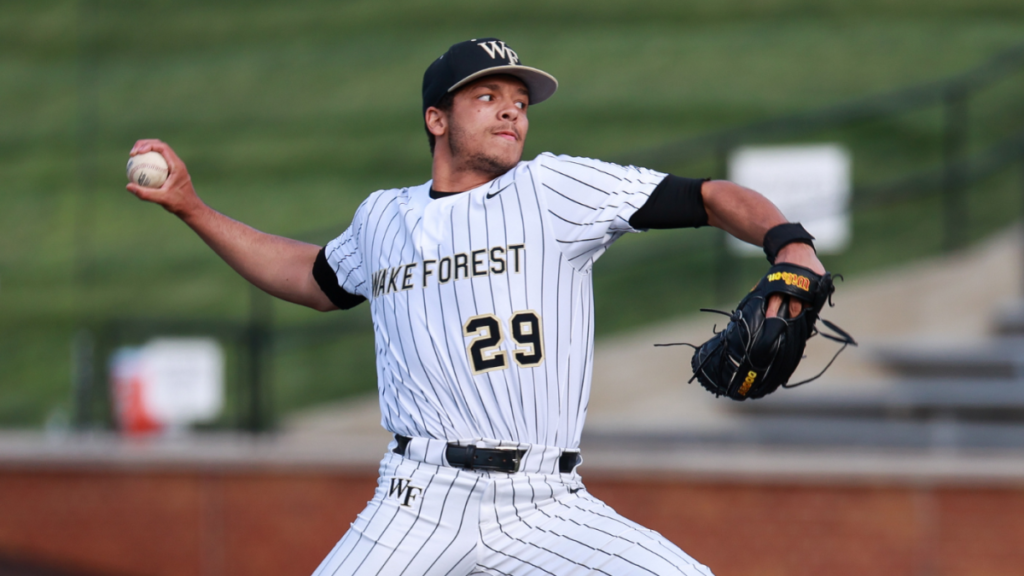Pittsburgh Pirates right-hander Paul Skenes Makes History
Pittsburgh Pirates right-hander Paul Skenes made history this week, becoming the first No. 1 pick to make the All-Star Game the following summer. Skenes’ placement on the National League’s roster is fitting in several ways. Foremost, it’s a deserved reward after an impressive introduction to the majors that saw him amass a 1.90 ERA (215 ERA+) and a 6.85 strikeout-to-walk ratio over his first 11 MLB starts. Additionally, the announcement comes just days before Skenes can no longer be described as MLB’s most recent No. 1 pick.
Indeed, the Cleveland Guardians ushered in a new era Sunday when they drafted the No. 1 pick for the first time in franchise history. Combine those facts and you have the basis for a reasonable question: is there any pitcher in this draft who could match what Skenes has done over the last 12 months?
Nope. Thanks for reading.
Now, if that question is amended to a more reasonable inquiry — to say, “is there any pitcher in this draft who could enjoy MLB success in short order while boasting some similarities to Skenes,” then we would say yes. That individual is Chase Burns, a right-handed from Wake Forest who went No. 2 to the Reds Sunday after being ranked by CBS Sports as the third-best prospect in the class.
1. Big-time arsenal
Again, let’s be clear: Burns, 21, isn’t a Skenes clone. He’s not as physically imposing; he doesn’t throw as hard consistently (few do); and he’s unlikely to find an elite pitch in his back pocket, the way Skenes did this year with his sinker.
Still, Burns is an accomplished right-hander with a high-octane fastball-slider pairing. He was clocked as high as 101 mph this season, and his slider generated more than 60% whiffs.
Burns also has a few other promising pitches in his arsenal, too, including a curveball and a changeup. Don’t take our word for it. Quantitative pitch analyst Lance Brozdowski, who will appear on MLB Network’s draft coverage, gave the following grades to Burns’ pitches:
- Fastball: Plus
- Slider: Plus
- Curveball: Above average
- Changeup: Above average
For those not aware, “plus” is a grade up from “above average” on the scouting scale, just as “above average” is a step up from “average” and so on and so forth.
That means Burns very much has the kind of arsenal that lends itself to him becoming an above-average starter at the game’s highest level.
2. Produced at Wake
This should come as no surprise given that teams seldom draft players in the top 10 who had poor seasons, but Burns had an excellent year with the Demon Deacons. Across 16 starts, he compiled a 2.70 ERA and a 6.37 strikeout-to-walk ratio. He struck out 191 batters in 100 innings, including 50% of those he faced during ACC play.
At the same time, Burns issued walks to fewer than 6% of ACC batters, giving him a bonkers 44.5% differential that led all ACC performers. (Florida State’s Jamie Arnold, who could be the top pitcher in next year’s draft, finished second at 30.6%.)
For those new to our draft coverage, it’s widely known that MLB front offices use performance during conference play as a proxy for how a player will perform once they turn professional and have to consistently face high-caliber competition. Burns has shown that he’s up to the task — and then some — to a degree that bodes well for his pro prospects.
3. Following Skenes’ arc
When we note that Burns has some similarities to Skenes — and it’s something we’ve done since the springtime — we don’t mean just as a pitcher. There are some narrative beats present in both pitchers’ journeys to date.
Skenes, you may recall, transferred from the Air Force to LSU ahead of his platform year. Burns made his own move, trading in his Tennessee Volunteers garb for Demon Deacons apparel. Both then saw their stocks improve at their new homes. Remember, Skenes entered his draft year ranked by CBS Sports as the 18th best prospect in the class; Burns, for his part, was the No. 8 prospect back in the springtime. By the time the summer rolled around, however, both were slotted in as the top pitcher in their respective classes.
Will Burns continue to trace Skenes’ line so neatly heading forward? Probably not. But that doesn’t mean it’s for a lack of trying, or for a lack of exciting possibilities.
sentence: “I cannot believe how quickly time flies.”
“I am astonished at how swiftly time passes.”

